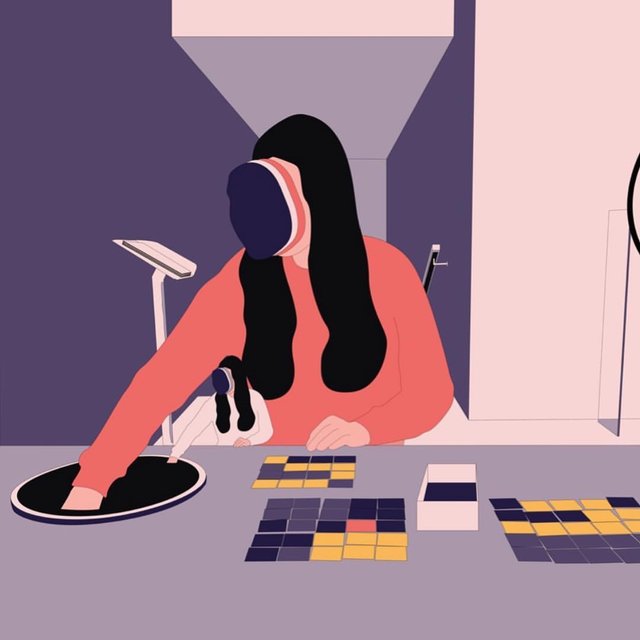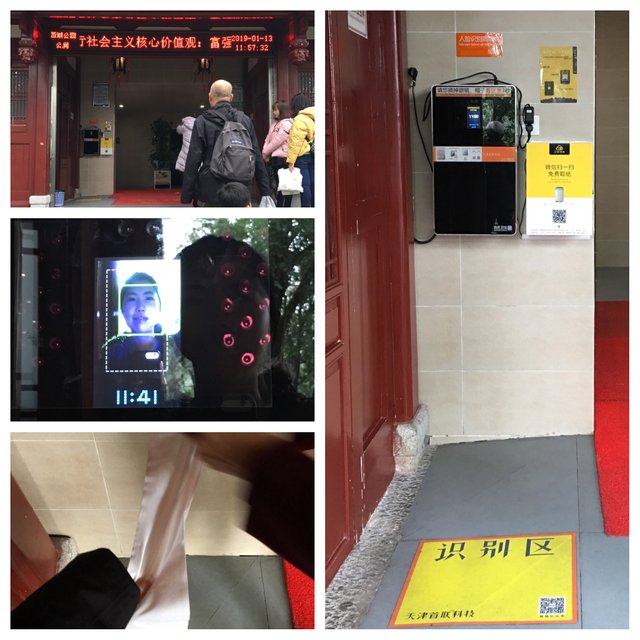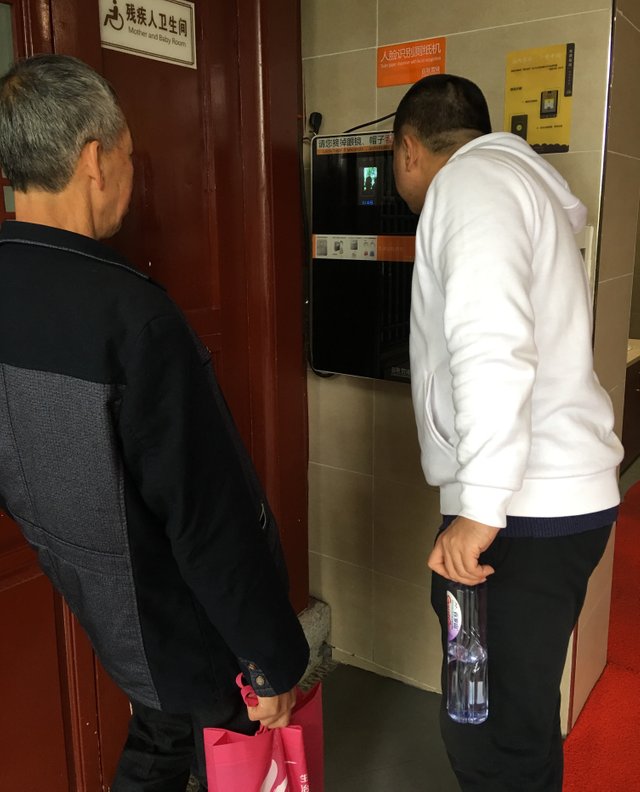My humble experience with using a Chinese public bathroom from a UX perspective.

Illustration by Miriam Jacobi
Why I'm Writing an Article About Toilet Paper
There are so many fascinating things about how technology is incorporated into Chinese society like the influence of WeChat, e-bikes, and its cashless economy. Unfortunately, this article isn't going to be about any of those things; it's going to be about toilet paper. Why? Because earlier this year my face was scanned by an automated toilet paper dispenser and I can't get over it. This isn't an episode of Black Mirror, it's real life.
Bathroom Culture
China has a problem with toilet paper; it gets stolen all the time. It's so bad that most public bathrooms don't bother providing it anymore. That's why, in Chinese culture - the part that no one ever talks about because it's too real - you're expected to carry your own in the form of travel tissue packs (readily available in every supermarket and convenience store, 😉). However, China's tourism industry is rising and since the bathroom part of Chinese culture isn't the proudest or the most sanitary, toilet paper is starting to make a comeback to meet tourist expectations. Currently select parks, attractions, and other high traffic areas have been graced with automated (via facial recognition) toilet paper dispensers and it's quite a sight to be seen. So if you're interested in Chinese culture, inclusive design, or curious about why toilet paper's such a big deal, please keep on reading.
History, not Mystery
In order to fully understand why China's investing in high tech for a low tech product, there are two things to keep in mind. 1: Public toilet paper gets stolen worldwide, but since China makes up about 20% of the world's population, there's a lot of paper at stake. 2: The reason why it gets stolen is a reflection of China's socio-economic history over the past century; we're talking about extreme poverty and lack of education. That changed dramatically in the late 1970s when the government placed economic reforms that have almost entirely erased urban poverty. Right now, toilet paper thieves are generally from older generations who grew up in poverty and people who are currently facing poverty, particularly migrant workers from rural areas.
My First Time
I was really excited when I found out about these dispensers. It was early January and I was with my Aunt in Zuohai Park, Fuzhou when she casually mentioned that there were new machines for toilet paper. I had to try them. In this particular park, there were two dispensers at the entrance of the bathroom and I happily stood in front of one. I made sure my face was in the camera's frame, stared at it for three seconds, and like magic, a two foot portion of toilet paper came out. Perfect.

Right behind me in line was an older gentlemen. He also stared at the camera for three seconds but this time the camera couldn't register his face. He tried to bend down, arch his back, move in closer, then farther away but nothing worked. At one point, a friendly stranger that came out from the bathroom tried to help him by using his own face, but the dispenser politely declined him in Mandarin Chinese because he apparently already received his portion and couldn't get more! At this point, a realization came over me and at once I felt uncomfortable and slightly amused. I mean, isn't it both hilarious and scary when a machine recognizes your face and denies you toilet paper? I moved in closer to investigate the older gentleman's interaction with the dispenser. I noticed that towards the end of his attempt, there was a huge shadow across his face from the overcast since we were in an indoor/outdoor location, making him undetectable to the camera. He eventually gave up.

Final Verdict
If executed properly, facial recognition and other biometric recognition systems could serve as great opportunities of inclusive design. From my personal experience, the type of toilet paper dispenser I interacted with could definitely be more effective and efficient. Let's breakdown the good and the bad:
The Pros:
- Free. The design successfully allows public bathrooms to provide free toilet paper without having to worry about theft. This is already a win considering many places don't provide toilet paper at all.
- Environmentally friendly. It saves paper since it's portioned and won't allow an individual to take more than one portion within a nine minute interval.
- It's hygienic. Utilizing facial recognition means that people don't have to touch the dispenser in order to activate it.
The Cons:
- Waiting on line. There were two dispensers at the bathroom entrance in Zuohai Park. That means people have to wait on line to get toilet paper before even entering the gender divided individual stalls. (Added Pro: At least the dispenser lines are genderless.)
- Uncontrolled variables. Not all public bathrooms are designed for facial recognition technology to work. If the only free wall space for dispensers is near the entrance of an outdoor bathroom and the camera can't pick up someone's face because of uncontrollable variables like the weather and amount of daylight, that's a problem.
- Is it even enough? Some people need more than two feet of toilet paper. I'll leave it at that.
- Height. If someone's a lot taller than the dispenser, on crutches, or has a leg injury, that person is going to struggle with getting their face into frame. On the opposite end, if someone's shorter, in a wheelchair, etc. and can't even reach the camera, there's no way that person can get toilet paper without human assistance.
- Language. For a machine that's meant to be used in high traffic tourist areas, it would be beneficial if there was at least an English translation and braille under every Chinese instruction and signage near and on the dispenser, including the actual interface. The dispenser also only speaks in Mandarin Chinese.
- Privacy. This is more than just a toilet paper dispenser. As much as it's reducing theft and waste, it's also monitoring the public and capturing faces for China's giant facial recognition database.
But Wait, There's More
So what happens if the dispenser isn't working or if you refuse to have your face scanned but still need toilet paper? The good news is that conveniently right next to the main automated toilet paper dispenser is a mini toilet paper dispenser, and all you have to do for this one is scan your WeChat QR code.

Congratulations @jennylin! You received a personal award!
You can view your badges on your Steem Board and compare to others on the Steem Ranking
Vote for @Steemitboard as a witness to get one more award and increased upvotes!
Downvoting a post can decrease pending rewards and make it less visible. Common reasons:
Submit